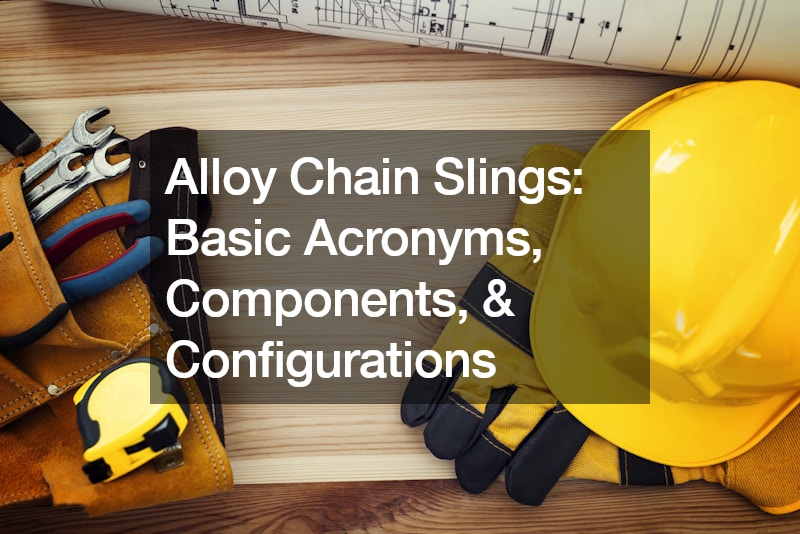Alloy chain slings serve as indispensable tools across industries, offering robustness and adaptability in lifting operations. Familiarizing oneself with their essential components, configurations, and pertinent acronyms is pivotal for safe and efficient deployment.
ACRONYMS:
- SWL: Safe Working Load designates the maximum weight a sling is engineered to lift under optimal conditions.
- WLL: Working Load Limit signifies the maximum load capacity a sling can safely endure during routine operations.
- SOS: Sling Operating System encapsulates all procedures and components essential for the safe use of a sling.
COMPONENTS:
- Chain Links: Crafted from alloy steel, these links form the core load-bearing structure of the sling.
- Master Link: Positioned at the apex of the chain sling, it provides the point of attachment for rigging chains and hooks.
- Hooks: End fittings enable the connection of the sling to the load.
- Adjusters: Devices facilitating sling length adjustment or enabling choke-hitch configurations.
CONFIGURATIONS:
- Single Leg: Comprising a solitary chain with attachments at each terminus, suitable for vertical lifting tasks.
- Double Leg: Incorporating two chains affixed to a master link, delivering enhanced stability and load distribution capabilities.
- Basket Hitch: This involves encircling the load with the sling, with both ends attached to a master link, which is ideal for lifting irregularly shaped or bulky objects.
.




